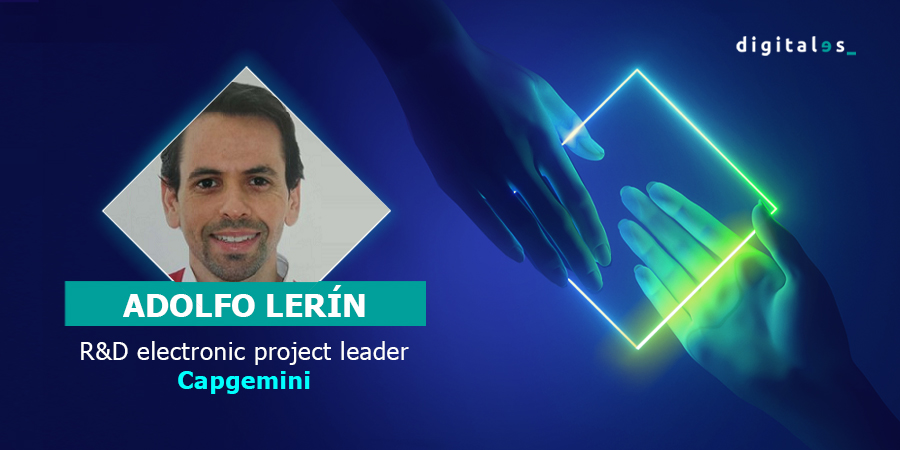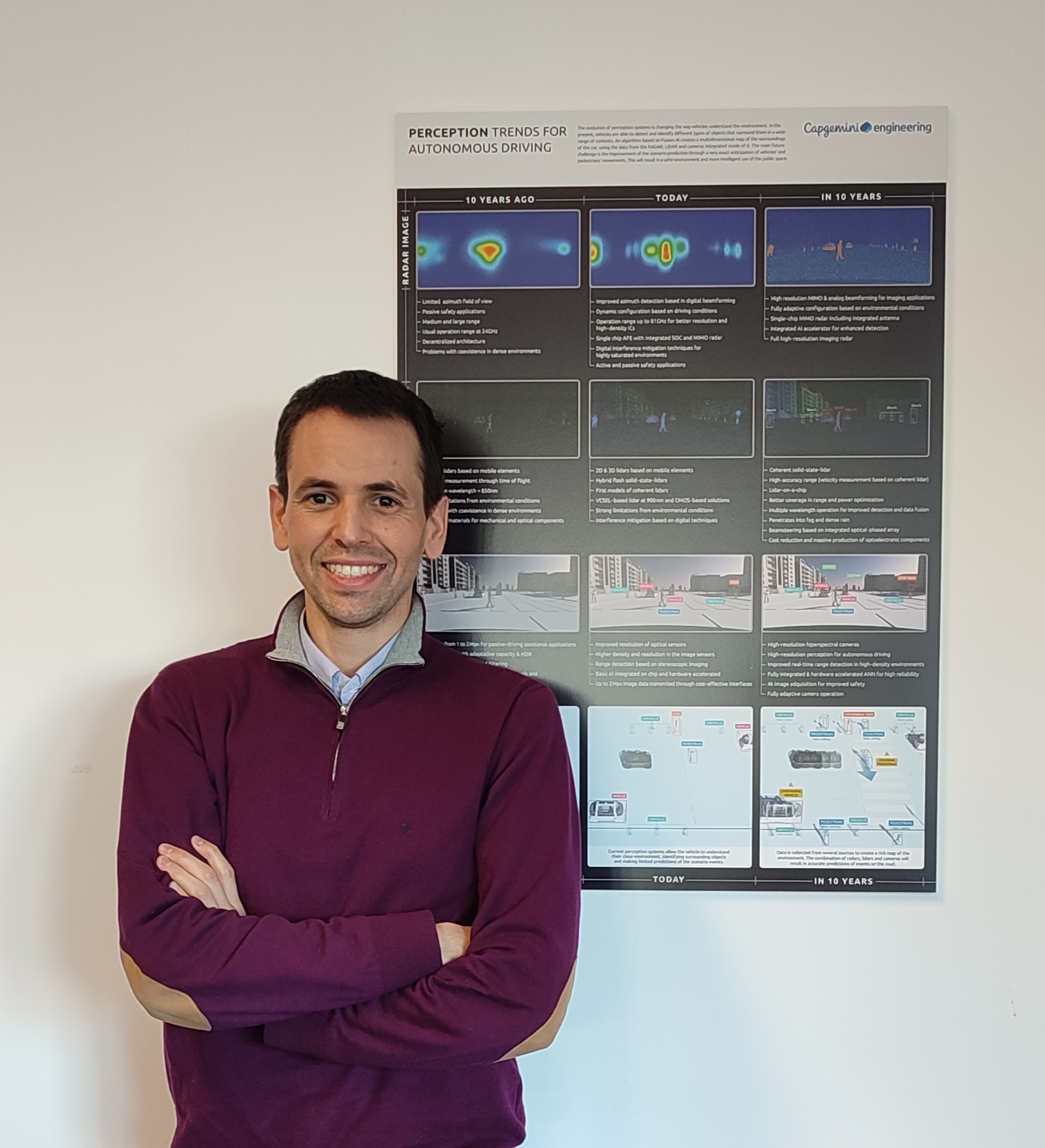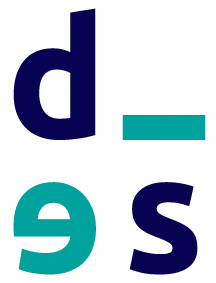13/01/2022
CRACKS of technology’ is a weekly series of interviews, through which we want to give voice to those IT professionals who are absolute geniuses of technology in Spain. We want to hear from them, to know and recognize the work they do in these companies; to know what they are passionate about and what advice they have for those who will come after them.
Spain is a pure exporter of vehicles and a world leader in the production of automotive components. The new generation of the connected and autonomous car is a great opportunity to remain at the forefront of the automotive industry. We have the right ingredients for this: through companies such as Capgemini Engineering (formerly Altran), we produce first-class technological engineering that is second to none.
Capgemini Engineering
(formerly Altran) we produce first-class technological engineering, which has nothing to envy from countries such as Germany, Israel or the United States.
Today we are going to know one of the proposals of this company for the future of the four-wheel industry, from the hand of Adolfo Lerín, a real “crack” of electronics and microelectronics.
We asked Adolfo when we will be able to see autonomous cars driving on our streets, what technologies will make this possible and what he thinks about the semiconductor crisis. Let’s hope they learn as much from him as we have. Keep reading!
Q.- Tell us about your line of research and work within the Capgemini R&D team (Engineering division).
A.- At Capgemini we work on everything related to advanced vehicle perception; we analyze how to redesign certain components of the car’s microelectronics or how to incorporate new technologies to help the vehicle perceive the entire environment.
More specifically, in my team we are very focused on the development of radar and lidar sensors, and the combination of these with other cutting-edge innovations. In short, we strive to offer complementary technologies to those developed by the automakers themselves. In all humility, I believe that from Spain we offer microelectronics solutions that are at the forefront worldwide, and that are also competitive.
“From Spain we offer microelectronics solutions that are at the forefront worldwide and are also competitive.”
Q.- Can we trust a vehicle to see or perceive the environment better than people, through our senses?
A.- That is the objective! Human eyesight has some limitations in calculating distances and is an easy victim of optical illusions. On the other hand, the connected car (and especially the autonomous car) must be able to determine depth and know unequivocally how far away another vehicle, an obstacle or a pedestrian is.
In recent years, the automotive industry has incorporated technologies that have greatly improved vehicle perception capabilities and, as a consequence, safety.
Q.- The new Road Safety Law introduces the concept of “automated vehicle”. Could it be said that we are already on the verge of seeing 100% autonomous cars driving around Spain?
A.- I believe in the autonomous car, I think it is a disruption that we will see, but let’s not fool ourselves, there is still a long way to go. Today, camera technologies have the same limitations as the human eye, radar cannot accurately identify the size, number and type of obstacles, and lidar does not work well in hostile environmental conditions.
It is clear that by combining these and other technologies already available we can greatly reduce the risks, but the second major challenge is to democratize access to this type of mobility. In my opinion, the accessible and universal autonomous car will still take quite a few years to become a reality; I would say beyond 2030.
“The accessible and universal autonomous car will still take quite a few years to become a reality; I would say beyond 2030.”
Q.- We have talked about some limitations of electronic technology, what other limitations are there?
A.- We must understand that the autonomous car is, paradoxically, very interdependent. These vehicles need to interact with the infrastructure, receive information from it, send and receive information to other vehicles and, in short, form an environment where all vehicles are part of the same “swarm”. The basis of all this M2M (machine-to-machine) infrastructure will be 5G. It will take a lot of investment and a lot of time to get there.
On the other hand, there is also a lack of a legal framework that establishes the attribution of responsibilities in case of failure or accident. This is a problem to which we must respond if we want this type of innovation to be consolidated in our society.
Q.- If 5G will be the basis for everything, will it be essential to have coverage in 100% of the territory?
A.- Yes, either through base stations or satellites. 5G and satellite systems will make it possible to provide a fairly accessible backbone for rural areas.
Autonomous cars of the future will likely incorporate 5G (or 6G) connectivity, combined with GNSS satellite navigation systems, cameras (for cost and ease of AI data processing) and evolved lidar. At Capgemini we are working on the latter, proposing to incorporate all of the vehicle’s sensing capabilities into a single chip or microprocessor. We call it “lidar-on-chip” and there we integrate microelectronics (conventional systems such as amplifiers) with other elements such as a laser, photo-detectors and circuits developed at the nanometer scale capable of modifying how light behaves.
Q.- What are the advantages of integrating these capabilities in a semiconductor?
A.- The main advantage is that it provides this high-resolution perception capacity, with a robustness that is very suitable for mobility services, and at a very competitive cost.
It must be taken into account that, in the automotive industry, a failure can lead to an accident and the death of people. Therefore, car electronics require higher certifications and robustness than, for example, consumer electronics. Automobile technology is designed for a 15-year life span. In defense and aerospace, this robustness must be even greater to guarantee a 40-year life.
Lidar-on-chip offers advantages of economy of scale but also allows you to extract advanced and more accurate information than you would get with a standard lidar about the distance between objects and velocity. You can even integrate digital applications to differentiate that signal from that of other lines, or from the signal of the Sun. That is, by integrating the lidar into the semiconductor you exploit other physical properties of the element and achieve higher resolution.
“Lidar-on-chip offers high-resolution perception and robustness, at a very competitive cost.”
Q.- How right Gordon Moore was…
A.- That’s right! Moore’s Law continues to be fulfilled and we engineers continue to be surprised that this is the case. There will come a time when electronic technology can no longer scale, due to insurmountable physical limitations such as the speed at which electrons travel, but then quantum computing will arrive… The wheel continues to turn, it’s exciting!
Q.- When talking about semiconductors, I can’t help but ask you about the origin of the current chip crisis… Where is the bottleneck? What role has the Covid-19 pandemic played in this situation?
A.- The pandemic was the trigger, but even before that there were factors that made us predict a shortage, as we are seeing, with strong geopolitical implications.
Semiconductors incorporate combinations of chemical elements – silicon is the best known – and some of these are highly localized in certain regions. In addition, there are very few companies worldwide that manufacture these substrates and Covid-19 has triggered a concentration of demand in a very short time. And to top it all off, the recent droughts in Taiwan, the weather-related stoppages of several plants in the USA and the fire at a factory in Japan. It’s a perfect storm.
Q.- Regarding Europe’s ability to gain relevance in the semiconductor industry, are you one of those who see the glass as half full or half empty?
A.- Europe is going to invest heavily in the coming years to strengthen its industry, although other regions are also going to do the same. Currently, the EU represents 10% of the world market, which puts us in a position of certain international weakness.
Personally, I see interesting opportunities in specific niches of microelectronics, such as opto-electronics or the inclusion of optics within electronics. In other words, working with light/photons instead of electrons or, as mentioned above, combining the handling of photons and electrons from a single chip to perform advanced functions.
At Capgemini, we have been working for some time on developing our own integrated semiconductor component for automotive; our own coherent lidar sensor, which allows us to determine distances and speeds with high resolution and in an energy sustainable way.
“I see interesting opportunities in specific niches in microelectronics, such as opto-electronics.”
Q.- You have made a lot of emphasis on the potential of radar. Is radar doomed?
A.- They are complementary technologies to a certain extent, although lidar can replace radar. The first uses infrared light and the second uses radio waves. Light can be more accurate for measuring distances and can generate three-dimensional maps (so-called “point clouds”), even segmenting the shape of different obstacles. Tesla, for example, combines radar and cameras, while Google’s autonomous car used only lidar. It is a very powerful technology, but still very expensive.
We’ve talked a lot about lidar, perhaps because it’s the newest thing, but at Capgemini we also work with radar. We have developed a short-range radar for autonomous vehicles, very accurate for in-lane positioning, and we are currently in talks to start industrializing it.
Q.- At DigitalES we are very committed to promoting STEM vocations. In your case, as a graduate in Telecommunications Engineering, what was your vocation when you were young?
A.- The vocation in engineering is different from that of medicine, for example, because it is much more uncertain. You don’t know what kind of problems you are going to face, or even what kind of technologies will exist in the future. I simply wanted to understand how things work – radio, computers, electricity… -.
During the first years of my career I was interested in electronics and the physics behind it, and over the years I have been able to work on the application of electronics in very different fields, some of them with a great social background.
Q.- Do you think you made the right choice of profession?
A.- It is undoubtedly a very fun profession. Working in R&D has allowed me to meet people from very different specialties and to see that technological development is transversal to the different sectors. You never stop learning and you never stay confined to your own little niche. No, I have absolutely no regrets about the path I took.











